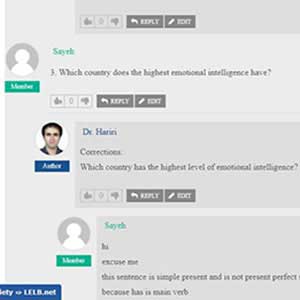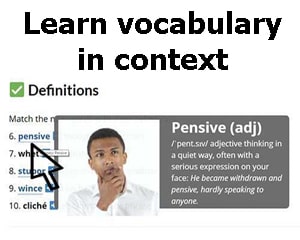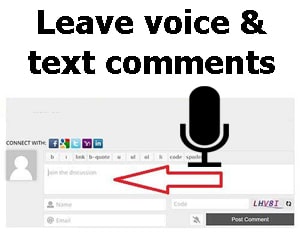Table of Contents
If you’re an online language teacher and you like to apply flipped classroom to your online classes, you can easily and practically implement flipped classroom by studying this article and putting the presented points in action. But before starting, we should know what flipped classroom is all about in essence.
What’s flipped classroom & how to implement it?

A flipped class has some specific features that make it distinctive from a non-flipped class. Perhaps one of the most significant dividing lines between the two is that any flipped classroom has two types of class activities: out-of-class activities and in-class activities. As part of out-of-class activities, in a typical flipped class, students watch instructional videos like a lecture given by their own teacher or any other instructor.
This video could be embedded in an online course previously assigned to the students. As a result, a great deal of class time could practically be spent on more cognitively demanding tasks in the live or synchronous class when the teacher is available.
Out-of-class activities in the form of asynchronous learning, namely watching embedded videos or lectures as many times as needed and leaving comments and replies in comment forms and discussion boards, can make the students more autonomous and teacher-independent in a positive way.
Consequently, this amalgamation of synchronous learning and asynchronous learning can help the students be more informed and prepared for more intense and demanding activities, such as problem-solving tasks, in the subsequent live classes at the presence of the teacher.
Realizing social presence through flipped classroom
You can flip your online language class with the intention of realizing the sense of social presence, which is a shared feeling of community and belongingness in the online social context and among the students. However, your adopted flipped learning approach should be collaborative by nature.
That is to say, the utilization of the asynchronous channels of communication, namely discussion boards and comment forms should be encouraged to account for collaborative flipped learning (Hariri Asl, Marandi & Maftoon, 2021).
Thanks to the availability of the state-of-the-art technology, particularly the internet, the students can and should get the most out of out-of-class activities through computer-mediated communication (CMC) asynchronously.
Hariri Asl and Marandi (2017) conducted a study on the influence of peer-assessment and student-driven negotiation of meaning on realizing social presence in online EFL social contexts.
The results of this study showed that optimizing student-driven patterns of interaction and asynchronous peer-assessment by means of commenting, replying, voting, rating and polling on the premise of inspiring and thought-provoking themes are the necessary prerequisites for the development of social presence.
Students taught through collaborative flipped learning can develop social autonomy or interdependency, which is a more mature stage compared to individual autonomy or independency. The concept of interdependency comes into view when learners are also encouraged to learn from each other (and not just on their own) en masse (and not just individually).
Asynchronous CMC can greatly facilitate social autonomy or interdependency as learners interact with each other asynchronously in discussion boards or comment forms in response to challenging themes or embedded videos.
As a matter of fact, a simple comparison between collaborative flipped learning and bare flipped learning without collaboration demonstrates that the former accounts for augmenting the level of student-student interactivity, autonomy and awareness on the part of learners as they learn how to learn from each other.
Stress-free learning environment
Collaborative flipped learning in which student-student interactivity and peer-assessment are promoted tends to be less teacher-driven and more stress-free because the students’ performance is not assessed only by one person, that is, the teacher.
As a consequence, the students would develop a more optimal level of belongingness to the education system and their classmates. This optimal level of sense of belongingness guarantees the realization of social presence in online learning environments.
How to implement flipped classroom
Teacher’s presence in collaborative flipped learning systems should be controlled and regulated to avoid any over-dominancy or excessive monitoring on the part of the teacher. An intense teacher’s presence could be counterproductive as it blocks asynchronous peer-assessment and student-student interactivity.
One way to optimize teacher’s presence is to mindfully delay teacher’s immediacy taking place in asynchronous channels of communication, namely discussion boards, comment forms, polls, etc. In this way, interactivity among the students would go up.
Another way to fulfill collaborative flipped learning is to tap into challenging and thought-provoking topics, videos, questions or other initiators. The mindful selection of topics or themes should be in a way that learners would feel that they’re learning something worthwhile within the framework of a language, namely English.
If utterly factual topics or materials are assigned, the students would not be motivated to conduct research on their own (individual autonomy), and then share their findings with each other interactivity and asynchronously (social autonomy).
Is flipped learning appropriate for all classes?
We should note that flipped learning is relatively a new learning approach. As a result, some of your students might initially resist it, which is natural to some extent. In this regard, Webb, Doman and Pusey (2014) conducted an experimental study to compare two EFL university classes in China lasting for 15 weeks.
During this period, the researchers implemented flipped classroom in one of the classes as the experimental group, while the other class was taught traditionally as the control group.
According to the results of the study, the majority of the students showed resistance to flipped instruction at the beginning of the study. Nevertheless, almost all of them changed their minds about flipped learning by the end of the investigation.
Bear in mind that flipping a class of young learners below the age of puberty could not yield satisfactory results because flipped instruction requires an optimum level of learner autonomy and self-regulation on the part of the student. As a matter of fact, young learners tend to be more teacher-dependent, which is not necessarily in sync with flipped instruction.
Flipping language classes through round tables
Round Table has been one of the main class activities at LELB Society from its birth back in 2015. According to this activity, LELB Society’s students are given the link to our assigned material for the following class. The assigned material on a new post comes with an embedded video, some selected text on the same topic, and an interactive comment form.

Our students are expected to watch the video at home and before the class as many times as they wish and at their own convenience. The embedded videos in the posts are documentaries, presentations, etc. in relation to the topic of the assigned lesson. Sometimes, the videos come with transcription to provide our students with some passages to practice reading as well.
All reading materials and texts at LELB Society are enriched with illustrated advanced vocabulary in the form of hyperlinks. That is to say, the students can read the text on their own and learn vocabulary in context with images.
Dr. Mohammad Hossein Hariri Asl, the founder of LELB Society, has illustrated, defined and used over 2,600 advanced vocabulary so far. These words have been adopted from the best-selling vocabulary books and packages, including 1100 Words You Need to Know, 504 Absolutely Essential Words, 601 Words You Need to Know to Pass Your Exam, and GRE Vocabulary Flashcards.

As a result, our students can read and understand even the most difficult texts, thanks to our growing advanced vocabulary that appear in context. The students can also select any text and listen to the selected text by means of our installed text-to-speech technology. Therefore, our students access almost everything to expand their learning before and after live classes.

For each round table, each student should leave at least one question or comment in the interactive comment form at the bottom of the assigned lesson. The other obligatory assignment on the part of the students is to reply to one of the existing comments before each live and synchronous class, generally held on Discord.

It is interesting to note that in some round tables, there have been over 80 interactive comments and replies from our students and teachers in a threaded or nested fashion. Then in our classes on Discord, we focus on the students’ asynchronous interactions and contributions in the comment forms or discussion boards as the main class activity.
References
- Hariri Asl, M. H., & Marandi, S. (2017). Peer-assessment and student-driven negotiation of meaning: Two ingredients for creating social presence in online EFL social contexts. Issues in Language Teaching, 6(1), 117-144. doi:10.22054/ILT.2017.8421
- Hariri Asl, M. H., Marandi, S. S., & Maftoon, P. (2021). Collaborative flipped learning through CALL: A recipe for realizing social presence in virtual learning environments. International Journal of Foreign Language Teaching & Research, 9(35), 95-114.
- Webb, M., Doman, E., & Pusey, K. (2014). Flipping a Chinese university EFL course: What students and teachers think of the model. The Journal of Asia TEFL, 11(4), 53-87.
